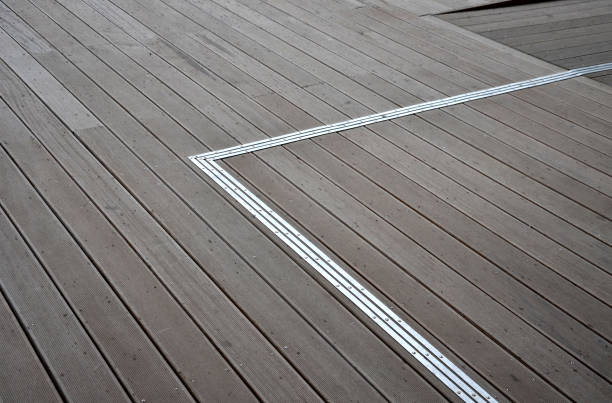Deck sealing may not be on your list of summer chores, but it’s a task you should take advantage of. There’s a place for the weathered wood look, but a sun-scorched deck can drastically reduce curb appeal. There’s no denying that the weathered wood look is beautiful, but a sun-scorched wood deck will reduce your home’s curb appeal.
Keep your deck sealed to avoid the unsightly look and risk of a weathered surface. Deck sealing is surprisingly easy to do yourself. It requires some elbow grease, but it’s not complicated. All that hard work will be worth it once you see how a wood deck glows and glistens after being sealed. Learn everything you need about deck sealing, from how to fill a wood deck, what types of sealants and stains to use, and when to do it.
What does deck sealing mean?
The term sealing is often used in a very loose way, especially when it comes to DIY and home improvements. We must explain precisely what it means. The majority of wooden decks are made from softwood, like pine. Pine is ideal for this type of construction because it’s readily available and cheaper than hardwood. Pine’s softness makes it less durable and less resistant to moisture and UV rays than hardwood. Wood decks are treated with various types of sealants to compensate. The bonds, which are reapplied periodically and are not permanent, offer protection for the wood and against rot.
Staining vs. Sealing
There are essential differences between sealant and stain, even though they are often confused. The presence of pigment is the primary visual difference. Adhesive can contain pigments that color wood when applied. Dyes, however, will always have tint. The two products also differ in terms of the level of protection. Sealant provides excellent moisture protection, while stain offers very little. Clear adhesives have minimal UV resistance, while pigments in many colors act as UV barriers for wood.
You can protect your deck against sun and moisture damage by staining it first, followed by a sealant. Modern products combine glue and stain to provide complete deck protection in one step, following the preparation work. It would be best to look for bonds with UV and moisture protection. Then, follow the instructions provided by the manufacturer for the application.
How much does deck sealing cost?
You can save up to 75% of the cost by doing this job yourself. According to HomeAdvisor.com, sealing a deck can be a cost-effective way to protect your deck investment and increase the curb appeal of your home. Costs will vary depending on the size and quality of your deck.




